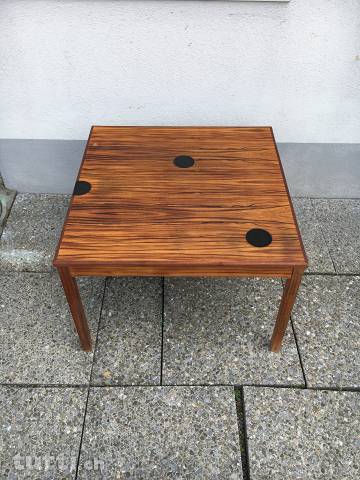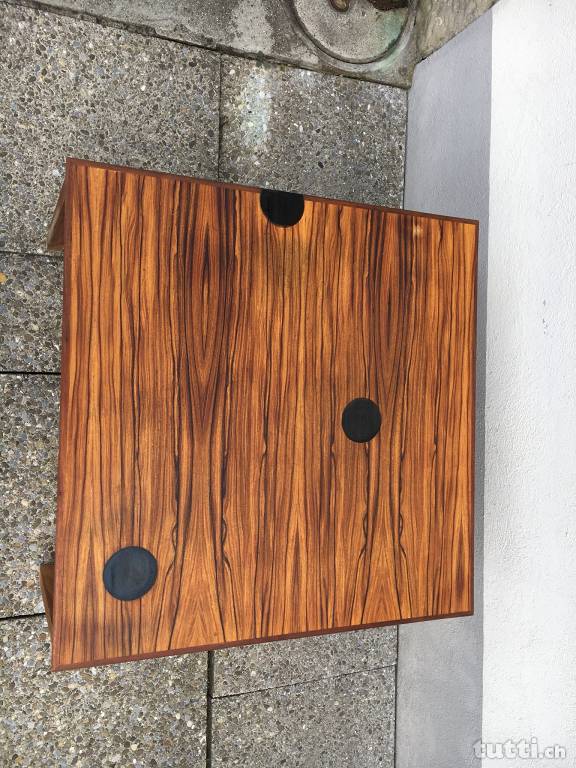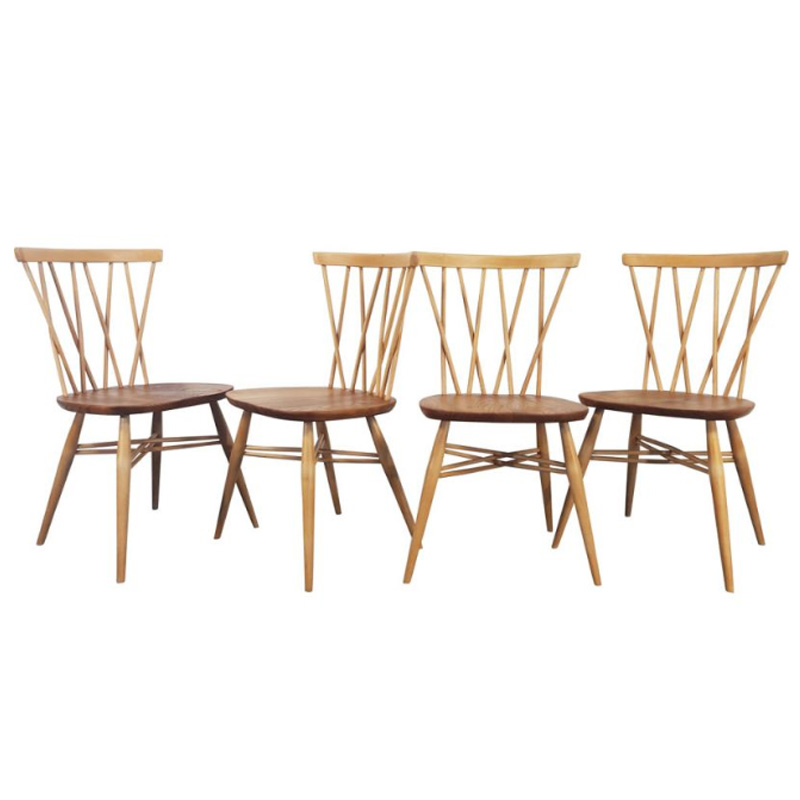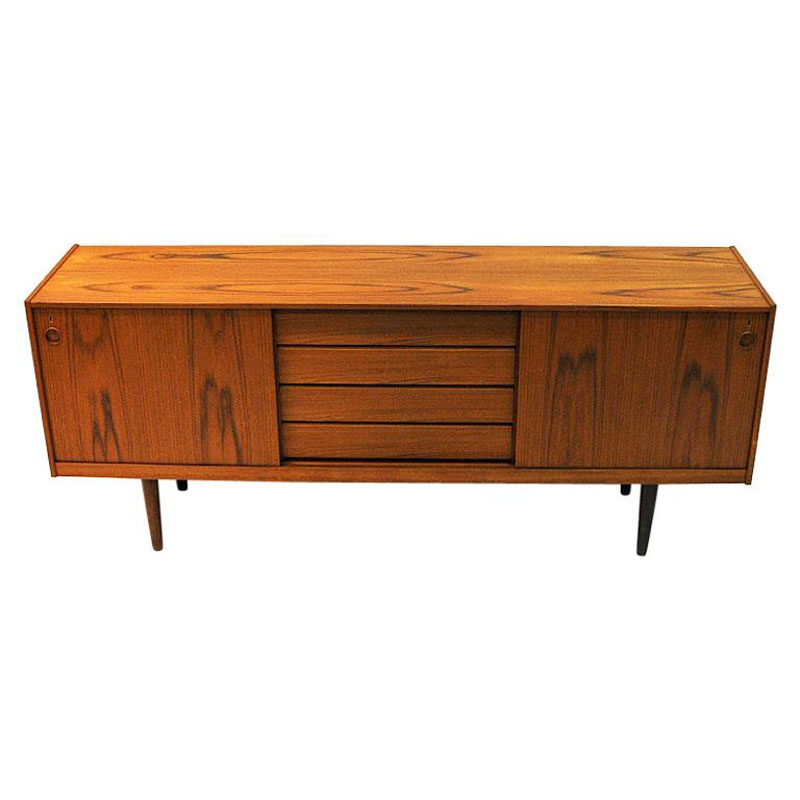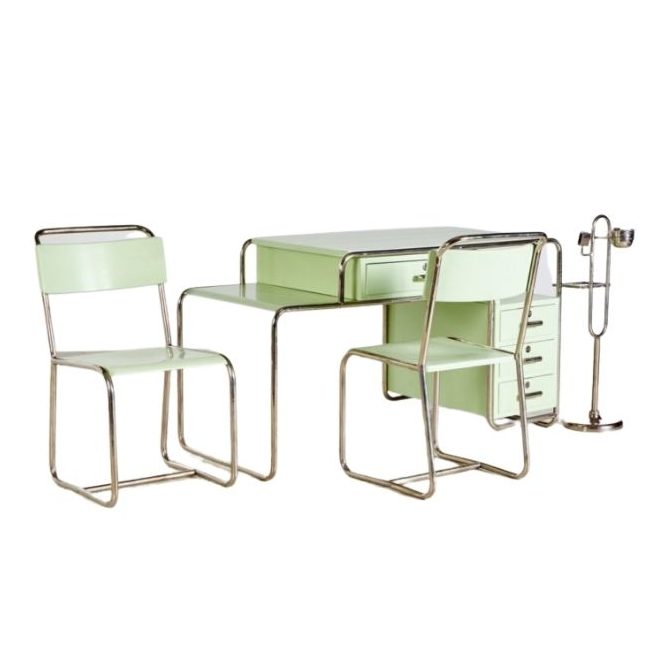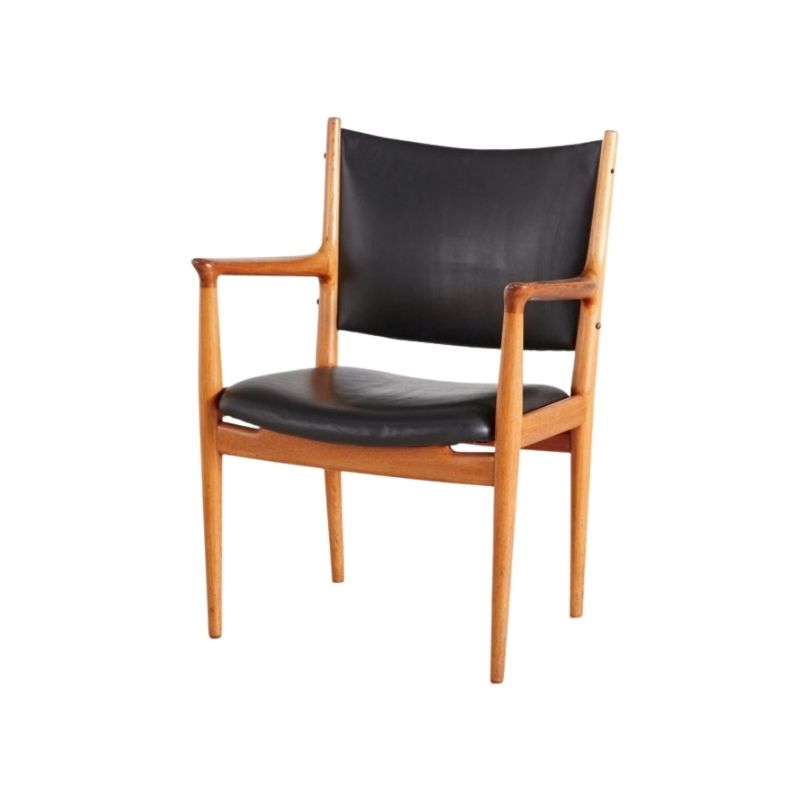Call me a conspiracy theorist, but there's light patches nearby all of the dots and that veneer seriously pops for an old piece.
I am wondering if someone tried to restore it, sanded through the veneer and then put less-than-funky-polka-dots on the damaged areas.
Definitely don't think it's original, but would love a close up.
It strikes me as likely that this is a cover up.
The light areas around the polka dots need to be explained. One explanation is Kyle's sand through. I suppose it is possible the polka dots are a harder material and the sander went through more veneer around them, but then there should be evidence for that sort of thing.
Polka dots on tables are not completely unheard of in danish modern furniture of the era, so maybe....
Looking at some Magnus Olesen tables today, I came across a reversible top example that had black coaster dots on one side. Upon doing subsequent searches, I was able to find four more examples of the same MO 166 table with dots. Interestingly, the dots are not in the same places on each table, with one table having 3 dots and the rest 2. Some dots also appear to be recessed while other dots are sitting on the veneer top. With these examples found in the US, England, Germany, and Sweden, the likely conclusion is that the MO dots were done at the factory in Denmark. Why they vary in location and number is still a mystery to me.
There is no mention of integrated coaster options for this table in the Domus Danica catalog.
Hi! That's certainly an interesting observation.
I find it puzzling that a furniture maker would use black paint over a nice veneer of teak or palisander, but it looks like these pieces were originally made that way. Also, the dots seem to be distributed only along one diagonal, while the table I asked for it has a very different dots distribution.
Or maybe there was a fashion in the 70es to add black dots to coffee tables, and owners did it on their own?
Cheers,
Ernest.
Hi, I found on this page at least two examples of these dotted tables from Grete Jalk:
https://www.invaluable.com/artist/jalk-grete-9c8o788w75/sold-at-auction-...
Cheers
Ernest
Hi,
I have one of these tables produced by Magnus Olesen and retailed by Domus Dancia. It is reversible and has pokka dots on one of the surfaces. Pretty sure it was produced in that way for practical purposes to allow it to be used for hot drinks etc and then reversed when required
If you need any help, please contact us at – info@designaddict.com


